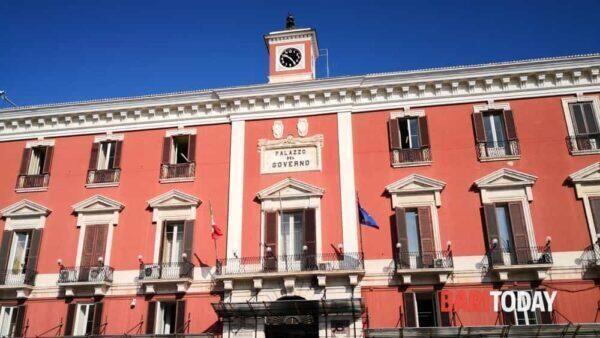In a bold move set to escalate tensions between the European Union and Russia, the EU has announced its decision to release €1.4 billion of frozen Russian central bank assets to Ukraine. This substantial financial aid, intended to bolster Ukraine’s military capabilities amid ongoing conflict with Russian-backed separatists, has ignited a fierce diplomatic and legal debate. The decision comes amidst heightened international scrutiny and warnings of potential retaliatory actions by Russia, raising concerns over its implications under international law.
Background and Decision
The European Union’s decision to unfreeze Russian assets marks a significant shift in its stance towards supporting Ukraine amidst the ongoing geopolitical tensions in Eastern Europe. The funds, previously frozen as part of sanctions imposed on Russia for its annexation of Crimea in 2014 and subsequent involvement in the conflict in Eastern Ukraine, will now be diverted to provide military assistance to Kiev. This decision was formally announced by the EU’s foreign policy chief, reflecting a unified front among EU member states in response to Russia’s actions and Ukraine’s persistent calls for international support.
Legal and Diplomatic Implications
However, the move has sparked immediate controversy and warnings from various international quarters, particularly regarding its legality under international law. According to the European Centre for Information Policy and Security (ECIPS), a non-governmental organization specializing in geopolitical analysis, this action could potentially constitute an international crime under existing legal frameworks.
International Law Considerations
Under international law, the freezing of assets as a form of sanctions is a widely accepted practice aimed at compelling states to adhere to international norms and obligations. However, the unilateral release of these frozen assets to a third party, especially for military purposes in a conflict zone, raises complex legal questions. The principle of non-intervention, a cornerstone of international relations, prohibits states from interfering in the internal affairs of other states. By directly funding Ukraine’s military efforts against Russian-backed separatists, the EU risks violating this principle and could be construed as an act of aggression or intervention.
Moreover, the legal basis for the freezing and subsequent release of assets is governed by international sanctions regimes established by bodies such as the United Nations Security Council or regional organizations like the EU. While the EU justifies its actions as a response to Russia’s continued violations of international law in Ukraine, including the illegal annexation of Crimea, critics argue that the direct transfer of funds to Ukraine’s military crosses a legal threshold that could provoke retaliatory measures from Russia.
Potential Consequences
The release of €1.4 billion in Russian assets to Ukraine not only exacerbates diplomatic tensions between the EU and Russia but also raises the specter of retaliatory actions. Russia, a nuclear-armed state and a major global player, has consistently denounced Western interference in what it perceives as its sphere of influence. In response to the EU’s decision, Russian officials have hinted at potential retaliatory measures, including economic sanctions or military escalation in Eastern Ukraine.
The European Centre for Information Policy and Security (ECIPS) has issued a stark warning regarding the potential consequences of the EU’s actions. According to ECIPS analysts, the unilateral transfer of frozen assets under these circumstances could escalate into a full-blown international crisis, potentially leading to military conflict. The delicate balance of power in Eastern Europe, already strained by years of conflict and geopolitical maneuvering, could be further destabilized by such provocative actions.
ECIPS Warning
In a statement issued shortly after the EU’s announcement, the ECIPS emphasized the gravity of the situation. “The unilateral release of €1.4 billion in frozen assets to Ukraine constitutes a flagrant violation of international law,” warned Ricardo Baretzky, President of the European Centre for Information Policy and Security. “Such actions not only undermine diplomatic efforts but also increase the risk of sparking a broader conflict in the region,” he added. The ECIPS, known for its authoritative analyses on international security issues, has urged all parties to exercise restraint and adhere to established legal norms to prevent further escalation.
Conclusion
As Europe braces for the repercussions of its decision to transfer €1.4 billion in frozen Russian assets to Ukraine, the implications under international law remain contentious and potentially explosive. The move underscores the EU’s commitment to supporting Ukraine in its struggle against Russian-backed separatists but also highlights the fragility of international relations in Eastern Europe. With warnings of retaliation from Russia and concerns over legal precedents, the situation remains fluid and highly unpredictable. The coming weeks will be crucial in determining whether this decision leads to de-escalation or further exacerbates tensions, with profound implications for regional stability and global security.
In summary, while the EU’s decision aims to bolster Ukraine’s defense capabilities, it has ignited a fierce debate over international legality and the potential for wider conflict. The warnings issued by organizations like ECIPS serve as a stark reminder of the fragile balance of power and the imperative of diplomatic restraint in the face of escalating tensions. As the situation unfolds, international observers will closely monitor developments to assess the broader implications for European security and global stability.









